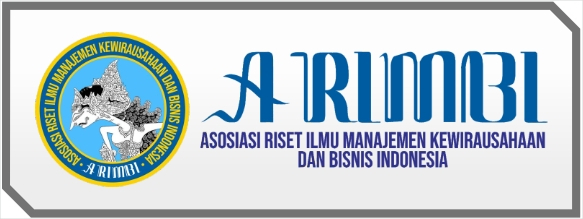ANALISA PEMBELIAN ALAT KESEHATAN DIMASA PANDEMI COVID-19 MELALUI PLATFORM E-COMMERCE UNTUK KONSUMEN DI KOTA BATAM
DOI:
https://doi.org/10.55606/jaem.v2i2.264Keywords:
Utilitarian Value, Hedonic Value, Shopping Well-Being, Online Purchase IntentionAbstract
This study aims to analyze what are the factors that cause the purchase of medical devices during the COVID-19 pandemic through several e-commerce platforms in Batam City. In this study, the sample of participants was 293 respondents who had made transactions through one of the e-commerce platforms which were distributed through online questionnaires using the judgmental sampling method and the data were processed using the Statistical Package and Service Solutions (SPSS) program.
The results of this study indicate that the Hedonic Value variable has a significant effect on the Shopping Well-Being variable, while the Utilitarian Value variable has no significant effect on the Shopping Well-Being variable. Hedonic Value and Shopping Well-Being have a significant effect on the Online Purchase Intention variable, while the Utilitarian Value variable has no significant effect on the Online Purchase Intention variable. This research is expected to be a reference for some people who want to open a business on an e-commerce platform. So that it can add information and knowledge to compete with other competitors.
References
Agustin, I. N. (2019). Aplikasi Software Spss dan SmartPLS Modul Statistika Universitas Internasional Batam - 2017.
Akram, U., Junaid, M., Zafar, A. U., Li, Z., & Fan, M. (2021). Online purchase intention in Chinese social commerce platforms: Being emotional or rational? Journal of Retailing and Consumer Services, 63(November 2020), 102669. https://doi.org/10.1016/j.jretconser.2021.102669
Akram, W., & Kumar, R. (2017). A Study on Positive and Negative Effects of Social Media on Society. International Journal of Computer Sciences and Engineering, 5(10), 351–354. https://doi.org/10.26438/ijcse/v5i10.351354
Ariffin, S. K., Mohan, T., & Goh, Y. (2018). In fl uence of consumers ’ perceived risk on consumers ’ online purchase intention. Journal of Research in Interactive Marketing. https://doi.org/10.1108/JRIM-11-2017-0100
Arora, N., & Aggarwal, A. (2018). The role of perceived benefits in formation of online shopping attitude among women shoppers in India. South Asian Journal of Business Studies, 7(1), 91–110. https://doi.org/10.1108/SAJBS-04-2017-0048
Atmira Qurnia Sari?, Y.L. Sukestiyarno, A. A., & Jurusan. (2017). Batasan Prasyarat Uji Normalitas dan Uji Homogenitas pada Model Regresi Linear. Unnes Journal of Mathematics, 6(2), 168–177.
Ayuwardani, R. P., & Isroah, I. (2018). PENGARUH INFORMASI KEUANGAN DAN NON KEUANGAN TERHADAP UNDERPRICING HARGA SAHAM PADA PERUSAHAAN YANG MELAKUKAN INITIAL PUBLIC OFFERING (Studi Empiris Perusahaan Go Public yang terdaftar di Bursa Efek Indonesia Tahun 2011-2015). Nominal, Barometer Riset Akuntansi Dan Manajemen, 7(1). https://doi.org/10.21831/nominal.v7i1.19781
Azzari, V., & Pelissari, A. (2020). Does brand awareness influences purchase intention? The mediation role of brand equity dimensions. Brazilian Business Review, 17(6), 669–685. https://doi.org/10.15728/BBR.2020.17.6.4
Chen, H. S., Liang, C. H., Liao, S. Y., & Kuo, H. Y. (2020). Consumer attitudes and purchase intentions toward food delivery platform services. Sustainability (Switzerland), 12(23), 1–18. https://doi.org/10.3390/su122310177
Cheong, J. W. (2019). The study of online reviews and its relationship to online purchase intention for electronic products among the millennials in Malaysia. Asia Pacific Journal of Marketing and Logistics. https://doi.org/10.1108/APJML-03-2019-0192
Doulatabadi, M., & Sheng, G. R. (2020). An analysis of factors affecting young consumers intention with online shopping in Malaysia. Proceedings of the International Conference on Industrial Engineering and Operations Management, 0(March), 1–12.
El Hedhli, K., Zourrig, H., & Chebat, J. C. (2016). Shopping well-being: Is it just a matter of pleasure or doing the task? The role of shopper’s gender and self-congruity. Journal of Retailing and Consumer Services, 31, 1–13. https://doi.org/10.1016/j.jretconser.2016.03.002
Erika Bellani1, K. (2015). Pengaruh car, fdr dan oer terhadap profitabilitas (roa) pada bank umum syariah di indonesia periode 2011-2015. x, 1–12.
Erkan, I., & Evans, C. (2016). Social media or shopping websites? The influence of eWOM on consumers’ online purchase intentions. Journal of Marketing Communications, 24(6), 617–632. https://doi.org/10.1080/13527266.2016.1184706
Hair, J., Black, W., Babin, B., & Anderson, R. (2014). Multivariate Data Analysis (Seventh). In Multivariate Data Analysis (Seventh) Pearson Prentice Hall. Routledge.
Hamed, S., & El-Deeb, S. (2020). Cash on Delivery as a Determinant of E-Commerce Growth in Emerging Markets. Journal of Global Marketing, 33(4), 242–265. https://doi.org/10.1080/08911762.2020.1738002
Hsu, C. L., & Lin, J. C. C. (2016). Effect of perceived value and social influences on mobile app stickiness and in-app purchase intention. Technological Forecasting and Social Change, 108, 42–53. https://doi.org/10.1016/j.techfore.2016.04.012
Hwang, J., & Griffiths, M. A. (2017). Share more, drive less: Millennials value perception and behavioral intent in using collaborative consumption services. Journal of Consumer Marketing, 34(2), 132–146. https://doi.org/10.1108/JCM-10-2015-1560
Indriantoro, N., & Supomo, B. (2011). Metodologi Penelitian Bisnis untuk Akuntansi dan Manajemen: Vol. Pertama (Pertama). BPFE.
Irshad, M., & Ahmad, M. S. (2020). Understanding consumers ’ trust in social media marketing environment environment. International Journal of Retail & Distribution Management. https://doi.org/10.1108/IJRDM-07-2019-0225
Lee, H., Liang, C., Liao, S., & Chen, H. (2019). Analyzing the Intention of Consumer Purchasing Behaviors in Relation to Internet Memes Using VAB Model. Sustainability 2019. https://doi.org/doi:10.3390/su11205549
Lee, J. E., Goh, M. L., & Mohd Noor, M. N. Bin. (2019). Understanding purchase intention of university students towards skin care products. PSU Research Review, 3(3), 161–178. https://doi.org/10.1108/prr-11-2018-0031
Marikxon. (2018). Perkembangan Digital Marketing di Indonesia Memiliki Prospek di 2018. Maxmanroe.
Maulana, R. (2017). Potensi Digital Marketing Indonesia di Tahun 2017. TECHINASIA.
Mohammad Shafiee, M., & Es-Haghi, S. M. S. (2017). Mall image, shopping well-being and mall loyalty. International Journal of Retail and Distribution Management, 45(10), 1114–1134. https://doi.org/10.1108/IJRDM-10-2016-0193
Nasution, L. M. (2017). Quaternization Kinetics. I. Some Pyridine Derivatives in Tetramethylene Sulfone. Journal of the American Chemical Society, 77(21), 5472–5476. https://doi.org/10.1021/ja01626a006
Nghia, H. T., Olsen, S. O., & Trang, N. T. M. (2020). Shopping value, trust, and online shopping well-being: a duality approach. Marketing Intelligence and Planning, 38(5), 545–558. https://doi.org/10.1108/MIP-08-2019-0411
Novela, S., Sihombing, Y. O., Novita, Caroline, E., & Octavia, R. (2020). The effects of hedonic and utilitarian motivation toward online purchase intention with attitude as intervening variable. Proceedings of 2020 International Conference on Information Management and Technology, ICIMTech 2020, August, 75–80. https://doi.org/10.1109/ICIMTech50083.2020.9211197
Pratiwi, A. S., Sudjimat, D. A., Elmunsyah, H., Universitas, P. K., & Malang, N. (2017). Kontribusi daya kreativitas dan kinerja prakerin terhadap hasil uji kompetensi keahlian. 23, 285–293.
Riley, J. M., & Klein, R. (2019). How logistics capabilities offered by retailers in fl uence millennials ’ online purchasing attitudes and intentions. YOUNG CONSUMERS, July. https://doi.org/10.1108/YC-12-2018-0889
Siyoto, S., & Sodik, M. A. (2015). Dasar Metodologi Penelitian. Literasi Media Publishing.
Suparno, C. (2020). Online purchase intention of halal cosmetics: S-O-R framework application. Journal of Islamic Marketing, 12(9), 1665–1681. https://doi.org/10.1108/JIMA-09-2019-0192
Veer, N. B., Pawar, P. A., & Kolte, A. (2019). Effectiveness of social media tools and it’s impact on promotions. International Journal of Innovative Technology and Exploring Engineering, 8(7), 224–230.
Wingdes, I. (2019). Pemanfaatan SEM PLS untuk Penelitian. Seminar Nasional Hasil Pengabdian Masyarakat, 52(1), 43–48.
Wu, W., Huang, V., Chen, X., Davison, R. M., & Hua, Z. (2018). Social value and online social shopping intention : the moderating role of experience. Information Technology & People. https://doi.org/10.1108/ITP-10-2016-0236
Yin, J., & Qiu, X. (2021). AI Technology and Online Purchase Intention : Structural Equation Model Based on Perceived Value Artificial Intelligence Winning Consumers : Enabling Human Intelligence ”. According to. https://doi.org/https://doi.org/10.3390/su13105671
Downloads
Published
How to Cite
Issue
Section
License
Copyright (c) 2022 Jurnal Akuntansi, Ekonomi dan Manajemen Bisnis

This work is licensed under a Creative Commons Attribution-ShareAlike 4.0 International License.















